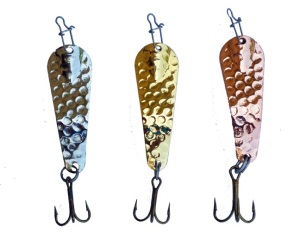Flanker.Openside No.7
Question
Hi there,How are you,Mr.Vujnovich.
I'm Saf and I am from Malaysia but am studying in Poland.
In Malaysia I have not much of this inferiority complex problem but when i join the rugby team here,I felt somewhat small.
I'm 5 foot 10 and am playing openside flanker.Im 90kilos at weight.
just want to ask your opinion.is height a really important aspect at playing in the forward position.Am I suitable enough?
178cm and 90kg at weight.
Thank you so much.
Answer
You are a great size for flanker. Make sure to stay on your feet at the tackle zone and really hunt the ball, try to steal it off the opposition tackled play. By being a little short you have a bio-mechanical advantage to have a lower center of gravity to get in and steal the ball at the tackle break down. Get very fit and be aggressive try to steal the ball and do not hesitate!
This might help you too with tackling:
This link to You Tube is VERY good:
http://www.youtube.com/watch?v=MQJ39bbq2uU
Here is some tackling advice:
The aim is to make a tackle to stop the play/player. Drive in hard and execute the tackle forcefully and wrap the player up well with your arms. The game of rugby moves fast enough that this will be enough to give your team the advantage. Read on for good technique but remember it DOES NOT HAVE TO LOOK PERFECT!!!! Even if you just grab the guys kersey and hold on till help arrives that will do! If you van execute the perfect text book takle then great but if it is ugly and works the result is the most important. Just do your best and commit.
Below is a past answer to a similar question. If you focus on the line of the players shorts / jersey or the string of their shorts then size will not be an issue. If a player is really big then letting them go buy and tackling from behind and sliding down the legs will bring them down. A firm grasp around the waist then drop down with all your might while squeezing their legs together.
Your head should go to the side that is "out of the way". If the player is running at you going to the left you head should go to the right side and vice versa. If the guy is running directly at you it would be best to put you head on the side the guy hold the ball but really don't over think it on that angle. The big thing is to drive your shoulder into the guys gut or lower sternum.
When tackling from the side the rule of thumb is "cheek to cheek" face to butt.
Here is a simple method for improving your tackle. When a player is moving towards you (or vice versa) do not look at their body as a whole, instead focus on the point of center between their hips. Often a coach will tell you to "eyeball" the "string of their shorts". This focus will allow your brain to only register the runner's center of gravity: the "mass" of their torso or core. No matter what a runner's arms, legs or head does the torso is usually stagnant.
Keep your feet active, stay on your toes either moving towards them or running in place. Close the space between you and the runner swiftly but stay in control. This is to limit the runner's options as much as possible. If you over commit to running into the tackle the player has a better chance of stepping you.
Focus on the "string of their pants" and drop your center of gravity to set up the hit. Bend at the knees, eyes up, straight back, hips lower than your shoulders like a prop in a scrum. Aim the shoulder to that string."Punch" into the players core with your shoulder and wrap the player up with your arms. Drive hard with little punchy steps of your legs.
To summarize:
1. keep the feet active "live"
2. focus on the "string of their pants"
3. drive the shoulder through the "string of their pants"
4. wrap the player up and drive with the legs in short steps.
Don't try to pick the player up, this is dangerous and will probably get you penalized. Drive hard with the shoulder and legs
Scrum Half - Communication
What position would I be best for?


